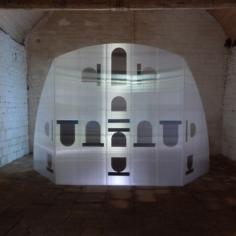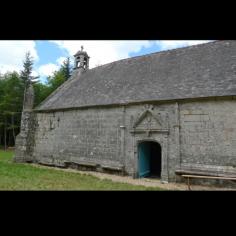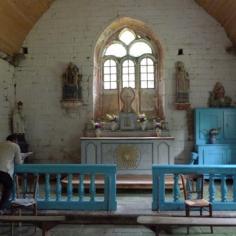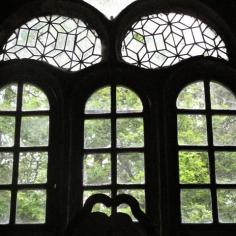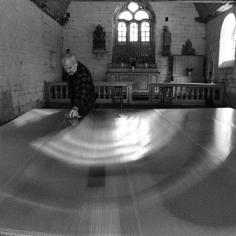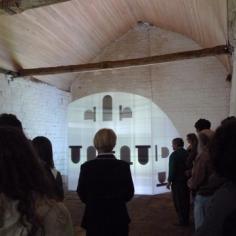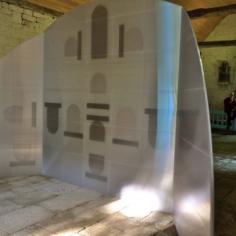2011 · L'Art dans les chapelles · 20ème édition (EN)
For the last 20 years the festival L'Art dans les chapelles (Art in the chapels) has each summer invited visual artists to enter into a dialogue with an artistic heritage of exceptional richness and diversity: chapels, stemming for the most part from the 15th and 16th century, that dot the Blavet valley in the Pontivy region of Morbihan.
Among the sites chosen for the event, the chapel of Notre-Dame du Cloître next to Quistinic hosted in 2011 an installation by the contemporary artist Éric Vigner, a visual artist and - for the first time in the history of the Festival - a man of the theatre, director of the CDDB - Théâtre de Lorient, Centre Dramatique National.
"It was the painful and dramatic history of the site during the war of 1939-1945 that attracted me”, explained Éric Vigner when presenting his work executed in polycarbonate, a nearly weightless and at the same time impressive material that catches and reflects the natural light and colours around it. “When I first came here I had a sign, a vision - it was the 24th of December around five in the afternoon. The light was low, sombre, and it was cold. All of a sudden my mobile started playing a Bach suite. “The angels” of the stained-glass windows were magnificent."
Situated at the entrance to the nave, the installation changes with the two sources of natural light filtering through the doors. A monumental triptych with 14 shapes embedded in the material, 14 “windows” echoing the 14 souls of the members of the résistance who lost their lives in this chapel. On the occasion of the vernissage, Éric Vigner asserted that it had not been his intention to create a memorial, but that he wanted to set free the souls that inhabited the place: the memory of the 14 resistance fighters who were staying, full of hope, in this chapel, which served as a clandestine infirmary, before they were cruelly slaughtered.
Delivery of the captive souls[1]
"I began to work with the window above the altar, a window in three parts made of white glass. It resembles an angel with wings. It is a fairly unsophisticated work, with drawings reminiscent of perspectives, vacillating between two and three dimensions. In a way this window protects the chapel. I worked on the motif of this window. The last plastic work that I had created was the stage setting for Shakespeare’s Othello, where the principal ‘prop’ was Othello's magic handkerchief - an immense one, 8 by 8 metres in size. What I was labouring to achieve was the play of light and shadow in and about this material which caused the light to filter through what looked like embroidery... The plot of Othello is a story of strangers, a story of the confrontation of Otherness; for me this story is related to the story of the Chapel, that is to say of French resistance fighters who encounter strangers in the tragic context of war. For the Chapel I thought up a half-sun folded at its extremities into a material used on stage as a kind of support: polycarbonate, which is both sturdy and translucent. Inspired by drawings for Paul Klee's house, I put 14 shapes into this material, with different shades from white to black. For me a work of art has to be open, not too much fraught with meaning. Even if they are not aware of the history of the chapel, spectators ought to be able to project something into the work. It is a work that plays with daylight, not with artificial lighting. The only “mise en scène” is the choice of place for the installation along with its scale, the 14 shapes embedded in it and the play of light on it in the course of the day.”
ÉRIC VIGNER
Éric Vigner's work always has to do with the “reality” of the place of his choice, be it a factory, cinema, cloister, museum, tribunal or stage à l’italienne, in a dialectic dialogue with the location and the text. He strives to shift the spectators’ view, and their posture, so that they become the leading actors in the play, with the secret intention to make them experience something of their own intimate history and thus the feeling that they are alive.
© Photography : Jutta Johanna Weiss
Texts assembled by Jutta Johanna Weiss
Translation from the French by Herbert Kaiser
© CDDB-Théâtre de Lorient
